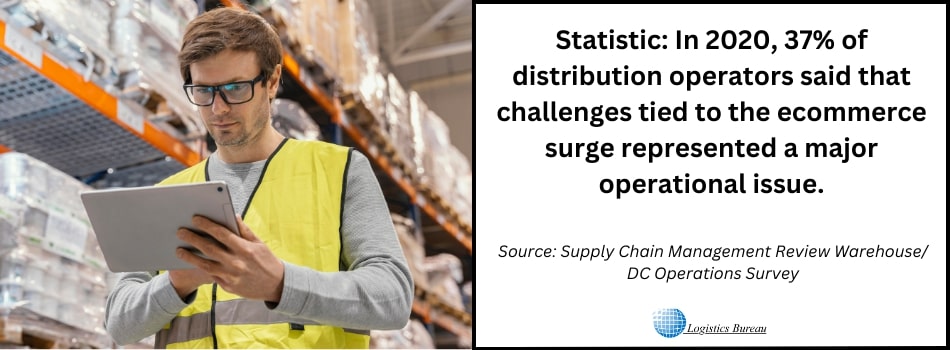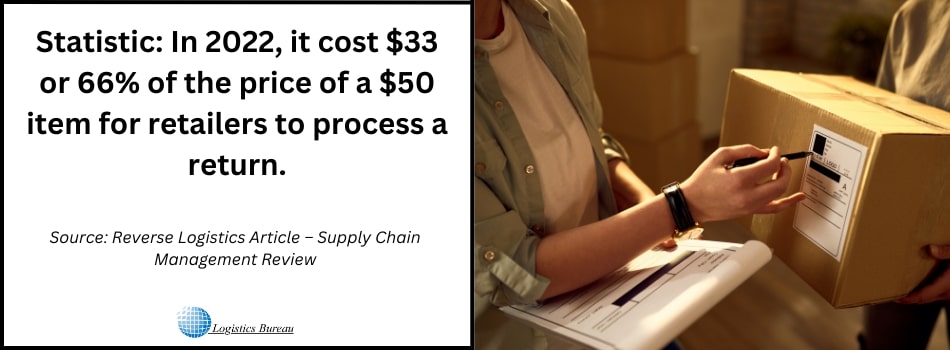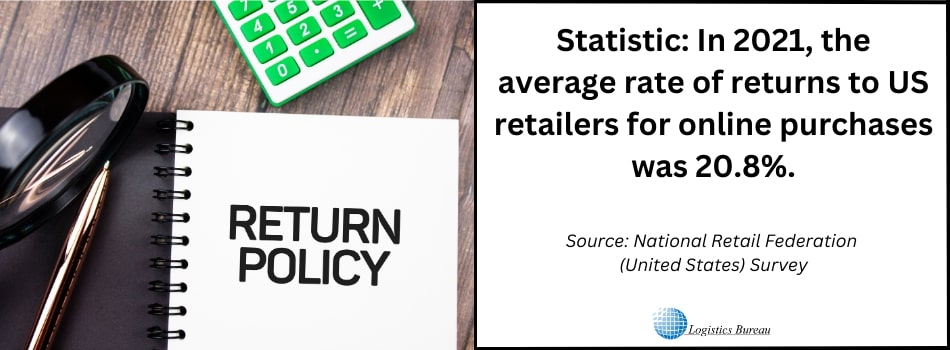Effective inventory management has become increasingly crucial for businesses in this fast-paced and rapidly evolving era of ecommerce.
Moreover, the ecommerce explosion has brought new and unique challenges that complicate inventory management for enterprises selling online.
In this article, we’ll look at some of those challenges and explore potential solutions to help you and your IM team meet the burgeoning demand for fast and accurate order fulfilment.
To kick off our brief guide, we’ll look at the challenge of managing inventory effectively across multiple sales channels.
Multichannel Sales Complexity: Organise, Organise, Organise
Does your company operate in the ecommerce sphere? If so, you probably sell products through your online store (and perhaps other websites), social media platforms, and even physical sales outlets.
Managing inventory in such a landscape can be challenging due to the complexity of tracking inventory levels across several channels and maintaining accurately synchronised records. Any shortfalls in the system will typically result in overselling, leading to stock-outs, and overstocking, which ties up working capital unnecessarily and can result in wasteful obsolescence issues.
So what can you do to ensure your inventory management meets the challenge of multichannel sales?
Standardise and Digitise
The key to managing complexity, of course, is to be organised. Try to establish consistency in the identification of your company’s products. That means using standard naming conventions for product categories and SKUs.
Similarly, you should standardise your inventory management processes as much as possible, including goods receiving and put-away, inventory counts, and returns management.
However, larger companies can find maintaining inventory accuracy and process efficiency difficult, even with the most ardent attention to detail and the most organised approach to IM. Therefore, we often recommend that our clients exploit proven inventory management technology and turn to automation whenever possible.
Simply put, there is no more effective way to ensure accurate ecommerce inventory control than to invest in IM software that can integrate with all your sales channels to provide real-time visibility, centralise inventory data, and automate stock updates.
Inventory Availability and Cost: Striking a Balance
It’s rarely a good idea to think too lean in ecommerce inventory management. High stock availability is of paramount importance to today’s online shoppers, who want a seamless buying experience without the inconvenience of waiting for your warehouse to restock before they can receive an order.
It’s a fact, though, that maintaining high inventory levels for every item can lead to increased carrying costs and potential overstocking.
The challenge, then, is to strike a balance between sufficient inventory levels to ensure availability and costs that won’t threaten the future of your enterprise. That said, it’s a balance that can be difficult to achieve without honing your demand forecasting capabilities to a fine point.
Symptoms of Inadequate Demand Forecasting
Signs that your forecasting is not up to snuff might include the following:
- Frequent stock-outs in your warehouse(s).
- Your competitors are shipping orders at a faster rate than your warehouses can achieve.
- Your inventory turns ratio is low.
- Warehouses full to the brim and laid out in a disorganised manner.
- Specific products subject to over and understocking.
- You’re ordering more stock than you need so you can meet vendor minimum order quantities.
Do you recognise any of the above symptoms in your distribution centre? Then it’s probably time to review your company’s demand forecasting practices because there’s every possibility that they need to be more accurate to help you manage inventory successfully in the ecommerce environment.
Better Forecasting = Better Inventory Control
The good news is that there are ways and means to improve forecasting. Here at Logistics Bureau, we help ecommerce companies to identify and apply the necessary techniques to heighten demand forecasting and become more competitive.
Would you like to improve your forecasting and achieve greater inventory control? We’ll be pleased to assist you in implementing methods to sense customer demand more accurately, enhancing your ability to optimise inventory levels, reduce stock-outs, reduce carrying costs—and ultimately increase profitability.
Need help with demand forecasting accuracy? Book a free consultation.
Getting to Grips with Reverse Logistics
In the ecommerce realm, returns from customers represent a far more significant challenge because of their sheer volume than in the days before the domination of online purchasing.
Indeed, for many companies, reverse logistics is synonymous with chaos, as returning items must be received from many locations, in a range of conditions, from perfect to unsellable, and in many different forms of packaging.
It’s no longer acceptable to treat returns as an aside unless you are prepared to fill a warehouse with goods with no clear path to resale or disposal—and suffer the ensuing cost impact.
The ecommerce logistics practitioner must instead integrate reverse logistics into his or her company’s inventory management strategies and processes. But for many enterprises, such integration is easier said than done, and much money is wasted in handling returns, many of which are left to moulder in warehouse corners or sold at ridiculously low markdowns.
So how to minimise the impact of returns on your inventory levels and costs? It’s an art requiring several approaches, including developing clear return policies, optimising the returns process, and, again, exploiting technology solutions.
3 Steps to Improved Reverse Logistics
Three of the most critical tasks in managing returned inventory are determining which products should, or should not, be accepted as returns, calculating the cost of returns, and establishing a definitive course of action based on the condition of each item and the policies that apply to it.
So, for example, you would be wise to limit returns permissibility to SKUs that your company currently stocks, with discontinued or special-order products treated as ineligible for return.
At the same time, you must provide transparency of return eligibility to your customers at the point of purchasing to prevent unpleasant surprises for the purchaser and reduce your need to handle ineligible items returned by mistake.
When returns are received, performing some form of triage is vital, taking appropriate decisions based on each item’s condition and promptly executing whichever process applies to it per your policies.
For instance, you might divide your returns into four categories, as follows:
Category 1: For Immediate Return to Stock
These are products that you can resell without any need for repairs or repackaging. As soon as an item is identified as such, you should ensure its immediate return to the correct storage location.
Category 2: For Repair or Repackaging
These would be items that require some attention before resale is possible. A prompt transfer to the appropriate department or team is essential to enable the product to be returned to a saleable condition and resold at the earliest opportunity.
Category 3: For Return to Vendor
You may have arrangements with vendors, especially if your company is not the manufacturer of the goods it sells, under which they take responsibility for returns processing. In such a scenario, upon receipt of the returned item, you should ship it back to the vendor immediately or at least stage it in readiness for onward shipping.
Category 4: For Scrap/Salvage/Recycling
You may only have a few options for returned items you cannot resell, although selling them through a secondary market may be possible. Otherwise, depending on the commodity type, you may need to scrap them, perhaps after salvaging some components (or not), or send them for recycling.
Here too, speed is of the essence, regardless of whether the item goes to a scrap pile, a rubbish bin, a disassembly station, or a recycling facility.
While nobody wants to suffer the loss of a sale—and an asset—in this way, it’s probably better to take the hit immediately than to let the returns pile up before writing them off the books en masse.
Understand the True Cost of Returned Inventory
So, what about the cost assessment? You should know the cost per line item of your returns, considering the costs of receiving, restocking (or disposal), and issuing credit memos.
Ideally, you will calculate the cost as a percentage of the sales value of goods returned over a specific period. You can then use that calculation as the basis of a handling charge for customers to be deducted from their return credit or factored into any cost-to-serve analysis you might perform to determine customer profitability.
Naturally, there is much more to return inventory management than we have space for in this article. Still, the tips above should help you to start cutting the losses generated by high volumes of ecommerce returns.
Managing SKU Proliferation
The seismic shift towards ecommerce and associated multichannel sales strategies has led to a rapid rise in the number of SKUs that companies carry. SKU proliferation is challenging retailers, in particular, to an unprecedented level. Why is this?
From our interactions with clients, it’s apparent that several reasons exist, each connected directly to the ecommerce boom. In summary, the most common causes, which are driving extensive growth in SKUs for many businesses, are as follows:
1) Retailer demand for larger-sized or multipack variants of conventional SKUs to offset packing and shipping costs associated with ecommerce sales.
2) A need for variants of products that are more suitable for online ordering and shipping than those suited for in-store sales (leak-proof packaging, for example).
3) Despite reason #1 above, there is also a high demand for downsized packaging in price-sensitive markets.
4) Many companies engaged in ecommerce are trying to satisfy various customer categories or consumer communities, leading to even more packaging variants catering to different languages and appealing to different cultural and ethnic cohorts.
All of the above factors contribute to the bloating of product portfolios and increased complexity in inventory management.
Furthermore, rapid shifts in customer preferences and demands make it tough to keep up with any process of review and rationalisation. Still, without these controls, SKU proliferation becomes an uncontrolled beast that depresses margins, inflates inventory dollar value, and can even outpace top-line sales growth.
The Need for Review and Rationalisation
If your enterprise is experiencing difficulties arising from SKU proliferation, a strategy for regular portfolio review and rationalisation should be one of the first measures to implement.
The review process should consider each SKUs economic value while also including an assessment of its reason for existence, potential for cost improvement, and competitiveness, along with other factors relevant to your market, to determine its value to your business. Where sufficient value is absent, you might select the SKU for delisting.
For larger companies with a significant number of SKUs to manage, digital technology in the form of product management information systems and predictive analytics tools can help to maintain control of inventory, support the review process, and forecast which SKUs offer the most potential for future value in the face of rapid shifts in customer preferences and behaviours.
It can also be helpful to involve a consulting partner in the portfolio review process, to ensure some impartiality and objectivity in the decision-making.
The Logistics Bureau team has a mountain of experience in managing and controlling SKU proliferation—and we can help you integrate relevant processes into your S&OP program. We can also work with you on other initiatives to manage an extensive SKU portfolio, including technology implementations.
For more about how we can assist with SKU portfolio management, book your free consultation call.
Dealing with Supply Chain Disruptions
Even before the COVID-19 crisis, ecommerce was booming, but the pandemic was a catalyst for the boom to become a very big bang indeed. As a lifeline for businesses and consumers during the long period of lockdowns and social distancing measures, ecommerce growth received an unexpected boost from a natural disaster that nobody saw coming.
However, as any whose business weathered the pandemic will contest, the ecommerce supply chain is as vulnerable to disruption as any other. COVID-19 brought that reality home with breathtaking force.
The ability to sell without traditional stores meant little to those enterprises that couldn’t meet the massive online demand due to crippled supply chains. Many that survived the difficult times have since made drastic changes to their supply chain and inventory management strategies, determined never to be caught out again by a global black swan event like COVID-19.
But if the pandemic was a lesson in the impact of supply chain disruption on inventory management, what did it teach us about reducing that impact?
Certainly, the concept of lean has lost adherents, due to the brittleness it creates in international supply chains, upon which many companies in the ecommerce sector rely. Even so, there is much that your company can do to minimise the need to hold high levels of buffer stock, which, after all, only adds to the IM burden.
How to Reduce the Impact of Supply Chain Disruption
Supplier relationships and thorough planning are both key requirements for adequate protection against supply chain disruption. More specifically, your inventory management team should seek to affect the following measures:
- Establish a diversified supplier base comprising vendors known for reliability.
- Build strong, collaborative relationships with those suppliers.
- Compile and document comprehensive contingency plans covering as many types of disruption as the team can anticipate.
While the need for contingency plans might seem obvious, it’s surprising how many inventory management teams overlook them—or rather, they don’t document their plans effectively.
Successful contingency planning requires documentation of the plans in a step-by-step format, to be kept updated and accessible, so your team can break them out and implement them as soon as a disruption event threatens to overwhelm the supply chain.
Keeping Inventory Visible
Our final insight in this article relates to inventory visibility, a substantial hurdle for many ecommerce enterprises. Indeed, while inventory visibility has always presented a challenge for supply chain operators, for today’s companies, with products flowing through multiple channels and often reliant on convoluted supply chains, it becomes even trickier.
Typical challenges in this area include:
- Ensuring no changes in inventory levels go unrecorded
- Updating digital technology to enable inventory updates in real-time
- Achieving visibility where manual processes are still in use
- Tracking inventory across multiple business IT applications, such as ERP, CRM, and SCM platforms
Inventory Visibility: IT is the Key
There is no viable substitute for bringing technology to bear in the drive for inventory visibility, and that means the associated costs, skills acquisition, and a step-by-step process of working through integration conundrums are inevitable needs.
However, there are one or two other elements of IM, which, when improved, can make some of the IT challenges easier to meet. For example, non-standardised processes are the enemy of tech-based inventory management, explaining the presence of process standardisation as an integral element in large IT implementation projects.
Even if your company hesitates to embark upon a significant IM technology overhaul, it may help to begin standardising your IM processes. If nothing else, such an initiative can help expose and eliminate process weaknesses, increase efficiency, and minimise the timeline and cost of later systems implementations and integration efforts.
Inventory Visibility in the Warehouse
Along with process standardisation, warehouse layout optimisation can improve inventory visibility within your storage facilities, making it easier to gain end-to-end visibility with later technological improvements.
A fully optimised warehouse makes processes such as put-away, counting, and picking more efficient and reduces the risk of errors. In our experience, many IM managers are surprised at how their warehouse layout impacts efficiency and visibility and by the substantial improvement they see after optimisation.
In summary, IM process standardisation and warehouse layout optimisation are robust foundations for visibility improvement with the help of IT upgrades and integration—and, of course, in supporting better inventory management generally.
Challenges are Opportunities, Even in Ecommerce Inventory Management
The ecommerce inventory challenges described in this article are not the only ones that exist, but they are some of the most perplexing for inventory managers to deal with. Since so many companies struggle with them, overcoming any one of them can give your enterprise an extra competitive advantage.
Aside from that, these challenges are deleterious to ecommerce performance, so it behoves business leaders to address them as far as possible.
At Logistics Bureau, our team of consultants is always ready to help your company unlock the opportunities inherent in IM challenges. We can support and assist you to:
- Manage the complexities of multichannel inventory
- Strike a credible balance of inventory availability and cost
- Improve reverse logistics performance
- Limit the impact of SKU proliferation
- Prepare plans for managing supply chain disruptions
- Improve the visibility of your inventory throughout the supply chain
Of course, we don’t limit our services to solving this particular set of challenges, so whatever inventory management concerns you wish to address, we’re happy to help—and it all starts with a straightforward conversation to understand them.
To that end, we’re pleased to offer an initial online consultation free of charge and obligation, so if you’re interested in turning an inventory management challenge into a golden opportunity, click on the button below to schedule that call.
Need help with your IM challenges? Schedule your free consultation call
Editor’s Note: The content of this post was originally published on Logistics Bureau’s website dated August 8, 2023, under the title “Ecommerce Inventory Management: Challenges & Solutions“.









